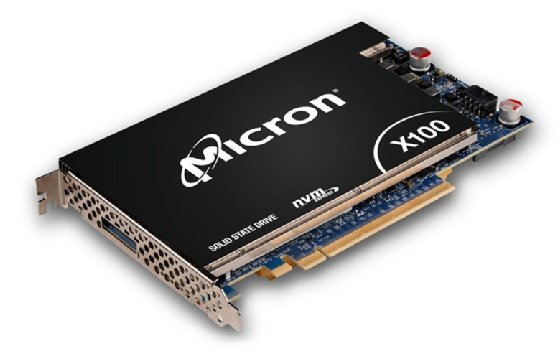
Sergey Nivens - Fotolia
Intel's 3D XPoint dominance will face challenge from Micron
Intel's Optane memory and storage products have no competition now, but that will change as Micron and potentially other vendors ramp up production in the future.
Intel's Optane memory and storage products may have no competition in the emerging 3D XPoint market today, but Micron Technology and other vendors could start to rock the boat over the next few years.
Micron should start generating measurable revenue from 3D XPoint products in 2022, according to Mark Webb, president of MKW Ventures. He said vendors such as Samsung and SK Hynix also could enter the fray with crosspoint-based phase change memory technology.
"I can't think of a market where Samsung said, 'Nah, we don't want to be involved in that,'" Webb said during a recent panel discussion at the Flash Memory Summit. He said memory manufacturers such as SK Hynix and Western Digital have also done research on phase change memory.
Micron and Intel co-developed 3D XPoint, a type of phase change memory in a crosspoint array, to fill the performance gap between more expensive DRAM and cheaper NAND flash. Micron bought out Intel's interest in IM Flash Technologies in Lehi, Utah, and the vendors ended their joint development work. Micron still supplies Intel with 3D XPoint wafers under a contractual agreement.
Intel Optane has big head start
So far, Intel has ruled the roost on the 3D XPoint product front with the launch of its Optane-branded solid-state drives (SSDs) in 2017 and dual in-line memory modules (DIMMs) in 2019. Webb said that although Intel hasn't made any money on Optane, he expects 3D XPoint revenue will grow steadily over the next few years.

MKW Ventures estimates that 3D XPoint revenue will hit $1.1 billion in 2020, including $600 million for DIMMs and $500 million for non-DIMMs/SSDs. The combined 3D XPoint total for Intel and Micron will reach $3.6 billion in 2024, when DIMMs represent about 78% of the revenue, Webb said.
"The 3D XPoint ramp has been slower than we projected, but it has surpassed all other new memory technologies and shipments," Webb said.
Most industry analysts have long viewed DIMMs as the more important form factor than SSDs, serving as a lower-cost, higher-capacity alternative to DRAM. In closer proximity to the CPU, DIMMs can also provide a greater application performance boost than an SSD can.
CXL could spark adoption
Webb predicted an inflection point for 3D XPoint persistent memory adoption in 2023. He asserted that the future of persistent memory is not on the DRAM bus, and the emergence of a Computer Express Link (CXL) bus or other new bus to connect the memory to the CPU would ease development and fuel a "big jump" in sales.
"These new buses will come on board, and that'll allow other architectures, so you don't have a completely proprietary [Intel] DDR-T so-called interface," Webb said. He claimed that Optane Persistent Memory could become available on a new CXL bus over the next two to three years, but Intel has yet to disclose its CXL plans.
Chris Petersen, a hardware systems technologist at Facebook and board member of the CXL Consortium, said CXL provides a high bandwidth, low latency interconnect for heterogeneous workloads, including AI and high-performance compute, and clears a path for memory expansion and pooling.
CXL runs on top of the PCIe Express physical layer and enables flexible server designs, with a common slot that can accept PCIe or CXL devices, Petersen noted at the Flash Memory Summit. He said CXL would also simplify options for customers, give them the flexibility to support a wide range of applications and enable them to more easily make just-in-time server configuration decisions.
"With [3D XPoint] persistent memory on an industry-standard bus, end users who want to use an AMD or Nvidia or Arm or other processor will be able to use it," said Jim Handy, general director and semiconductor analyst at Objective Analysis.
Micron poised for serious challenge
Saeed Raja, senior director of product management in Micron's emerging products group, predicted that, once new interfaces such as CXL come online, Micron would become "as competitive as anybody else in the market."
Raja said Intel's x86 servers have been the only option for 3D XPoint DIMMs, but AMD's recent acquisition of Xilinx and Nvidia's purchase of Arm created two more "big verticals" for servers with Arm-based CPUs.
"Our [3D XPoint] products will work in all of those three verticals," Raja said. "This is a very big thing for the industry, and it's a very important thing for the technology and for us."
Micron currently doesn't ship any 3D XPoint DIMMs, but Raja said they're on the company's roadmap. In the meantime, the only 3D XPoint product that Micron has made available to date is the full-height, half-length X100 SSD that it unveiled in late 2019 for cloud service providers, hyperscalers and server OEM customers. Micron promoted the X100 as the "world's fastest SSD," but Webb described it as "more of a development vehicle" for future 3D XPoint products.
At this month's Sanford C. Bernstein Operational Decisions Conference, Micron CFO David Zinsner said the company is in "early stages" with 3D XPoint, with no "meaningful revenue" beyond the wafers it sells to Intel. He acknowledged that the first products are "more just to get the product out there" with the desired performance, and subsequent generations would strive for even higher performance and better cost structure.
Raja said that Micron has new SSD form factors, and DIMMs are in the works to target customers' differing needs, including database and real-time analytics workloads. He said product releases would align with the launch of new x86- and Arm-based servers.
"Intel has done a great service for the industry, highlighting the value proposition and the usage of 3D XPoint," Raja said.








